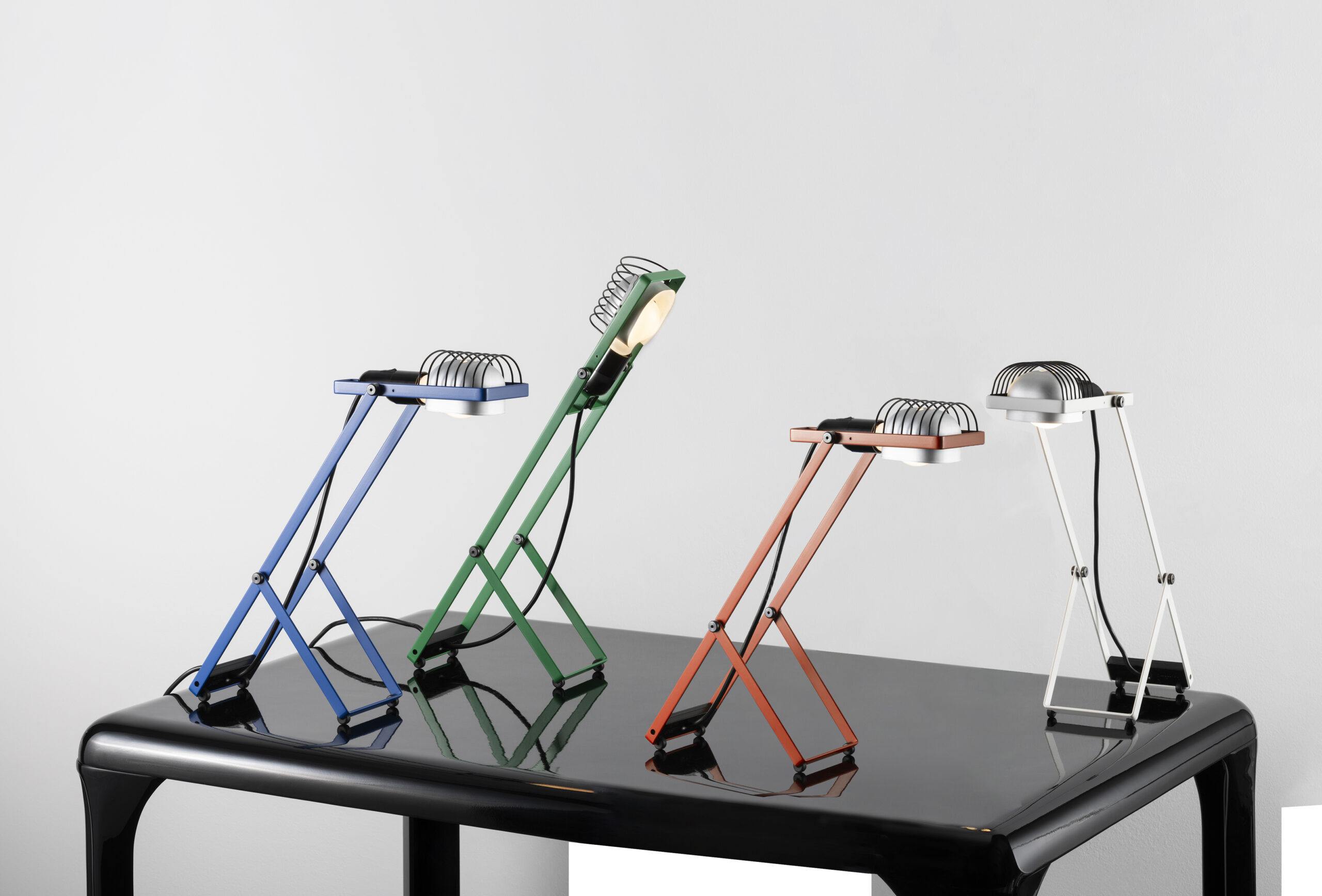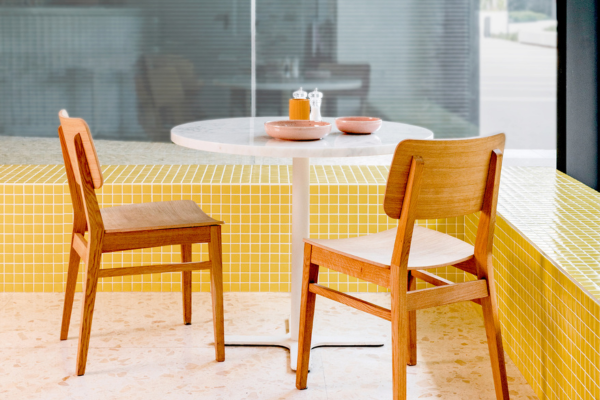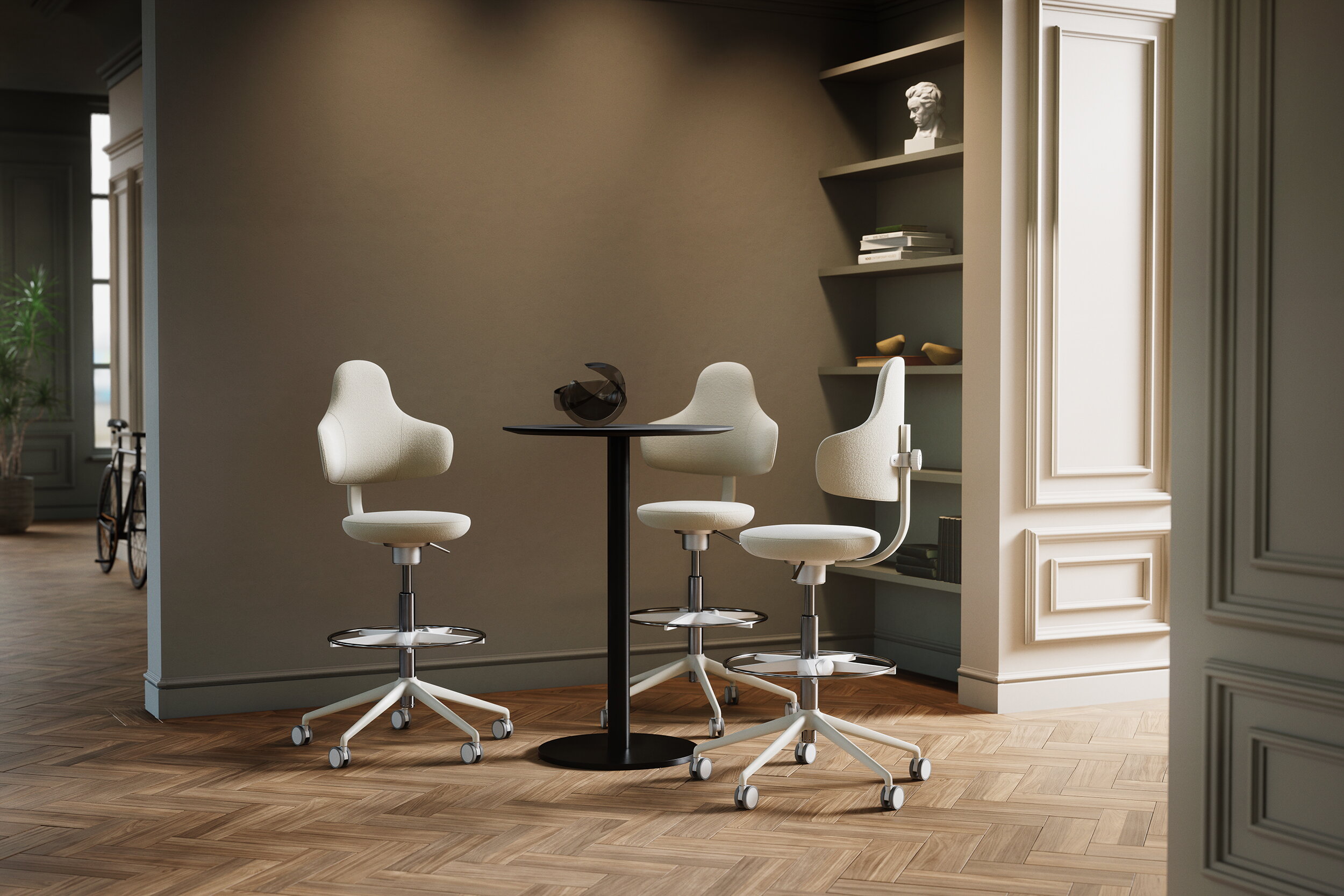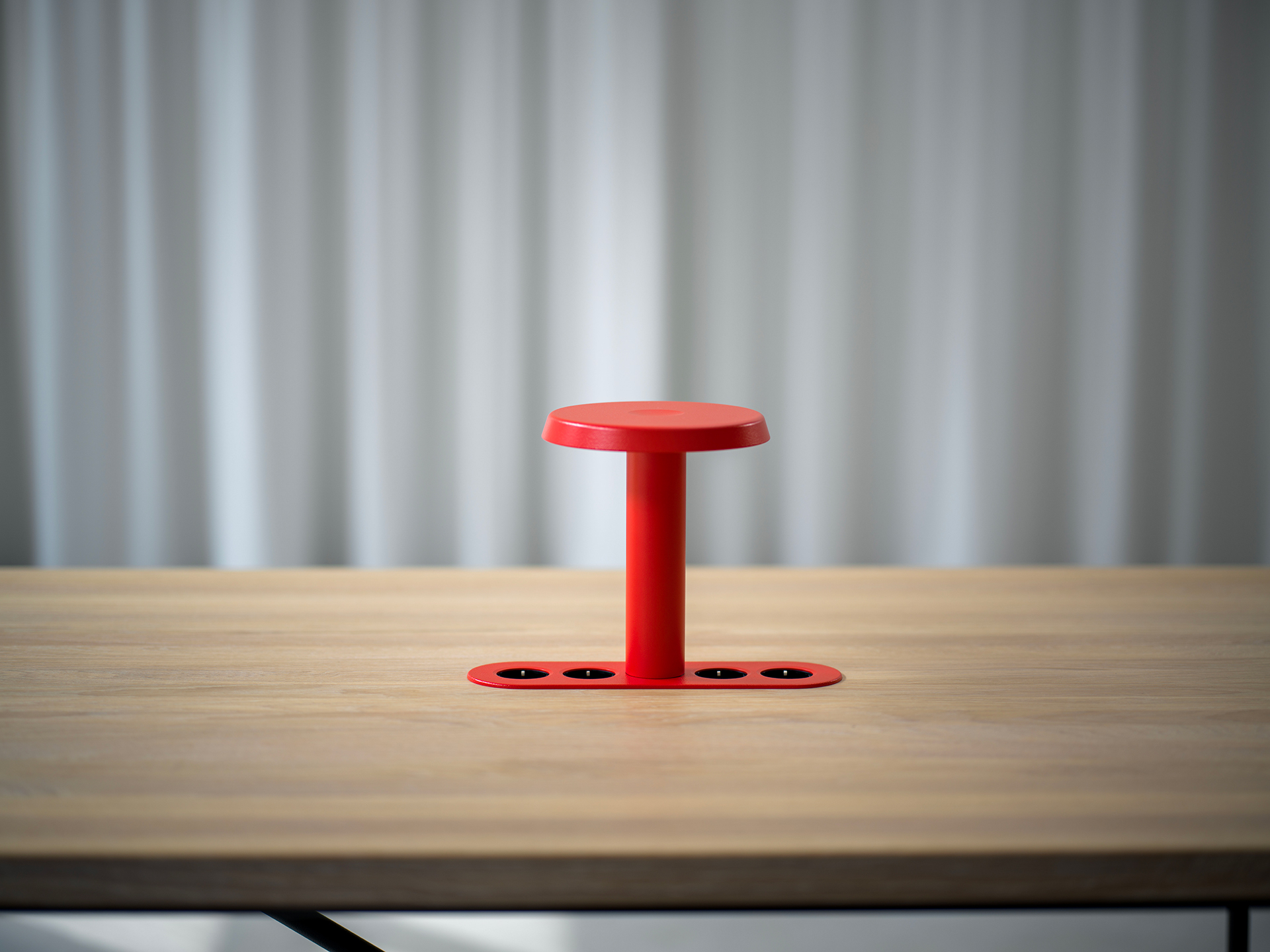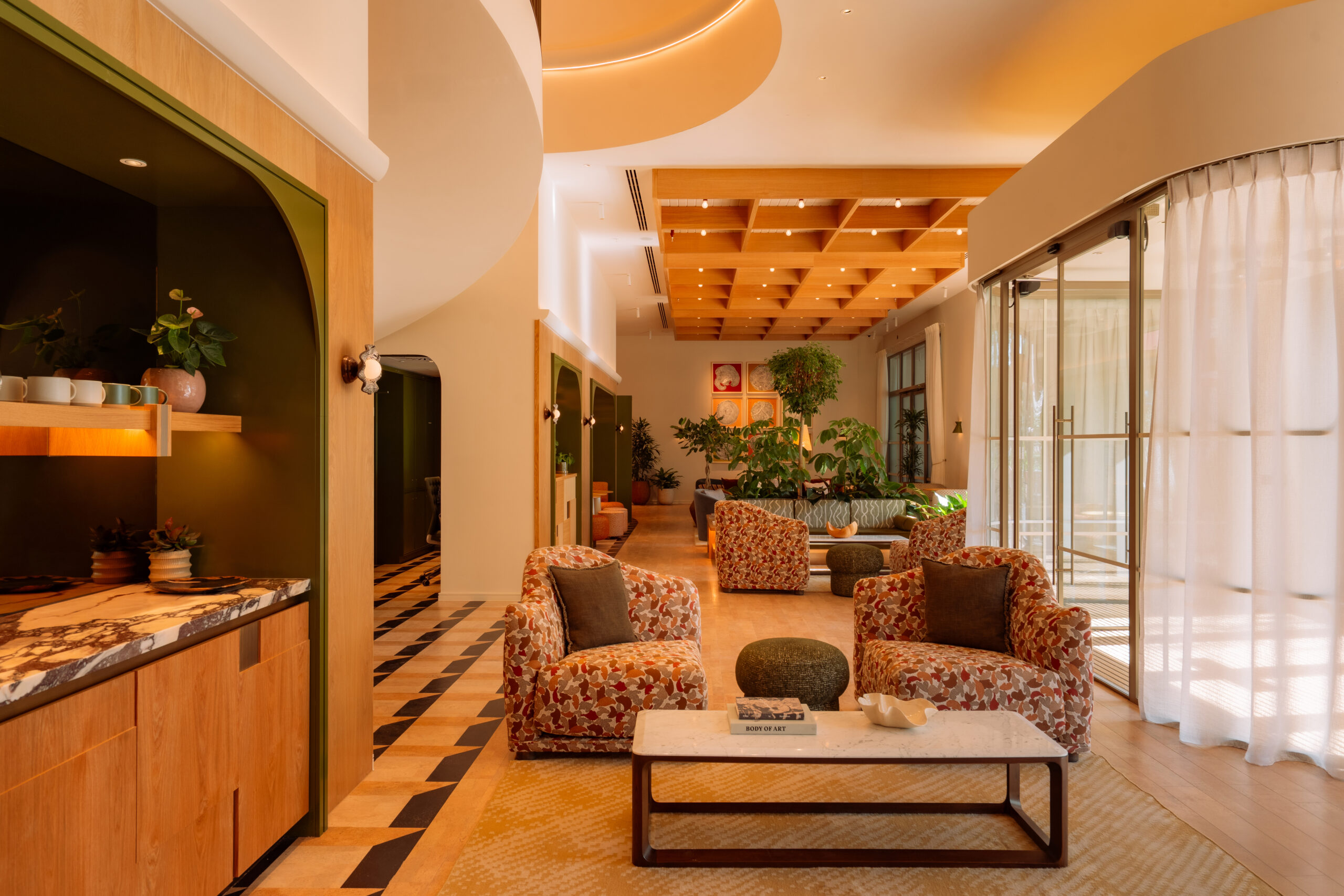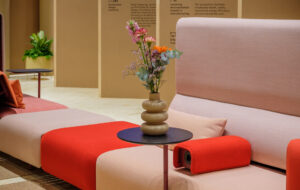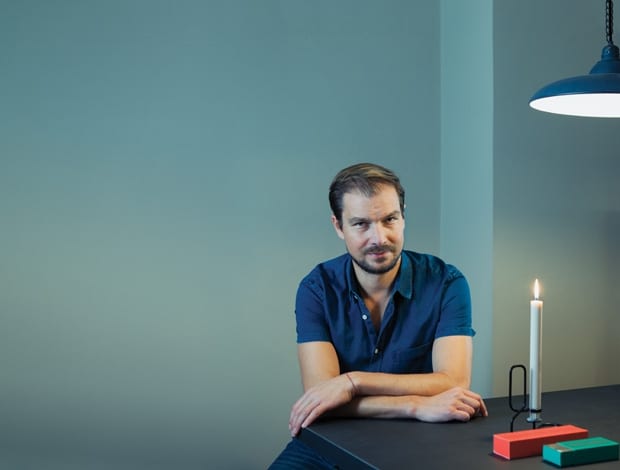 Stefan Diez at the townhouse where Wrong for Hay took up LDF residency|The New Order shelving system for Hay|New Order comes in many guises, working as a space divider, too|Diez’s rainbow-galvanised version of his Chassis chair|A firm that paints military vehicles was used for the galvanising process|The Chassis chair attempted to be an ‘everychair’|Wrong for Hay’s gravity-defying Rope Trick floor lamp|Cleverly folded pieces, like Moroso’s Bent seat, were an early signature|Bent table, part of a wider range for Moroso|E15’s lightweight Houdini chairs, made from veneered lacquered plywood||
Stefan Diez at the townhouse where Wrong for Hay took up LDF residency|The New Order shelving system for Hay|New Order comes in many guises, working as a space divider, too|Diez’s rainbow-galvanised version of his Chassis chair|A firm that paints military vehicles was used for the galvanising process|The Chassis chair attempted to be an ‘everychair’|Wrong for Hay’s gravity-defying Rope Trick floor lamp|Cleverly folded pieces, like Moroso’s Bent seat, were an early signature|Bent table, part of a wider range for Moroso|E15’s lightweight Houdini chairs, made from veneered lacquered plywood||
It’s ten years since Munich-based designer Stefan Diez opened his studio, but he’s looking forward, not back – anticipating a more streamlined industry that cares more about longevity than easy answers
“A good magic trick is something that takes a little effort, but the effect is huge. Like the magician who pulls the rabbit from the hat,” says Stefan Diez. “Of course, we know it is all fake; and it is the same idea with these tricks in design.” It seems odd to hear this unflashy German liken his work to some kind of gimmickry, as if Daniel Day-Lewis had admitted method acting was actually gibberish.
Diez is in town for the London Design Festival and, more pressingly, for the launch of his Rope Trick lamp.
In essence, it is a floor lamp with a stem resembling a starched rope stood vertically – it dryly references those passé acts performed by variety-show conjurors with names like the Great Majestico. Diez designed the lamp for Sebastian Wrong’s collaboration with Danish furniture brand Hay.
At LDF, Wrong and Hay founder Rolf Hay occupied a Georgian townhouse near St James’s Park, exhibiting Wrong for Hay alongside the house’s classical furniture.
onoffice meets Diez at a pop-up restaurant next door that feels, despite the preponderance of Scandinavian-influenced furnishings from said collection, a little bit Jane Austen. Diez has a reputation for seriousness, which seems attuned to his rigorous, hands-on approach to design. Often pictured in this studio manipulating sheets of steel or timber, our surroundings seem unlikely.
“In my early years as a designer I probably asked too much from a product”
Rope Trick marks Diez’s first foray into commercial lighting and it’s a typically refined effort. “We wanted to eliminate the complicated mechanical parts that dominate most lamps,” he says. “They are screwed together out of endless parts, like a bicycle, which doesn’t fulfil our expectations of modern integrated engineering.”
It’s true that many products make a virtue of exposing their innermost secrets but for Diez this is a backward step that his studio spent countless hours drilling and slicing extruded plastic profiles to do away with. “Hiding all the ugliness,” as Diez puts it. The result is a versatile (you can slide the lamp head up and down the stem and twist it in any direction) and witty design that stands out in a coherent, but otherwise unadventurous, collection.
Needless to say, Diez is tremendously pleased with it and indeed his relationship with Hay in general. One-off pieces or limited editions with artificially inflated prices hold no interest for him, he says.
Volume is what counts and it appears with Hay the Munich-based designer has found an international company that is willing to invest in design without making unaffordable products. Rope Trick, for example, costs £300 in a market niche where prices range from £800-2,000.
In contrast to the hullabaloo surrounding the Wrong for Hay launch, Tune – a triumphant reworking of Diez’s somewhat notorious Chassis chair originally designed for Wilkhahn, and an accompanying work desk – appeared with barely a murmur.
Released in the off-season between the Milan furniture fair and the London Design Festival, the lack of fanfare seemed apposite for such beautifully formed, understated products.
Tune came about through a three-way partnership between a gallerist, Jon Schellmann, who had been pestering Diez to make a one-off piece, and Wilkhahn. Though he initially trained as a cabinetmaker, Diez is not a man dedicated to preserving the techniques of yesteryear. Instead, the designer sought to unite modern machine-tooled processes with hand-finished craftsmanship.
To achieve this, the designer turned to the army, or more specifically, a Munich-based company that paints military vehicles, borrowing its techniques to add colour to the galvanisation process. “You have these brown or matt black or yellow glossy surfaces. The beauty comes from having different shades and densities rather than a flat even surface.” Diez applied this cocktail to the table legs matching the frame with the MDF tabletop by powder-coating it. Adding a cable-management bracket transformed the minimalist piece into a stylish office desk.
“We wanted to eliminate the complicated mechanical parts that dominate most lamps”
Tune also vanquished a spectre that has drifted in the background of Diez career, namely the hugely ambitious and, in the end, torturously drawn out Chassis chair.
The studio worked on the chair for around six years before it finally launched in 2012, by which time both designer and producer Wilkhahn were exhausted.
His mistake, though no less admirable, was trying to solve everything in one all-sweeping manoeuvre. “We made a product with huge potential. It had different surfaces, different seat materials, cantilevered versions, armrests or no armrests. I feel like we burned all our energy on that first shoot and no one could take it forward,” he says. “In my early years as a designer I probably asked for too much from a product. We learned a lot from that.”
A graduate of Stuttgart’s State Academy of Art and Design, Diez made his bones working for Richard Sapper and fellow Muenchen Konstantin Grcic before striking out alone in 2003.
Armed with formidable knowledge and steely determination, he arrived on the scene with something of a splash.
His MO mainly involved bending and folding sheets of metal and timber to create tables and chairs for Moroso (Bent Table), Thonet (404; 404F) and later E15 (Houdini; This, That, Other). “All material comes in sheets, and therefore the easiest way to make a three-dimensional object is to fold or bend it. I like the simplicity of this. But I am not a bender any more. It is like I did enough.” Diez chuckles when onoffice points out a hoop is the primary design flourish in Rope Trick.
It’s true, however, that with recent work, Diez has focused on the possibilities of post-production to transform a product’s appearance – like the design equivalent of filmmaker Hal Ashby. The approach has led him to investigate untapped talent in parallel industries, textiles being a good example. “It has become an important part of my profession to understand their production and thinking,” he says. “There is a great chance to find new ways and new typologies. If you don’t, then you end up with a mass of furniture that looks so retro.”
“We wanted to eliminate the complicated mechanical parts that dominate most lamps”
Diez is no mercenary. His meticulous nature means you can count the number of companies he has worked with on two hands.
He rails against the seasonal design culture built up around furniture fairs like fashion weeks. The media fuels much of this, in particular the blogosphere, and Diez is adept at filtering out the chaff that bombards us daily. “Ninety per cent of products we consume as pictures, and that product, because we have seen it, has served a purpose. Designers work with too many companies that are too impatient to bring products on the market and they disappear.”
The New Order shelving system for Hay took the studio two years to develop.
But it is not just products. Companies themselves are sinking faster than torpedoed battleships – like erstwhile collaborator Rosenthal, for whom Diez produced cutlery collection Tema, which was bankrupted in 2009 and sold to Italian brand Sambonet Paderno.
The economic crisis coupled with a steady erosion of manufacturing has scuppered much of the European old guard and, according to Diez, this is no bad thing. “At the moment we are surrounded by a lot of ex-successful companies. They’ve all had their good times and that is part of the reason why we are looking back so much. Manufacturers, designers – they all want the old times back, and this is fucking shit. But there are a lot of new brands now popping up, which is very positive. The old trees will just fall down and there will be some sunlight for the others.”
Few would dispute the design world is going through tremendous upheaval. The old financial model is bust and no one has quite worked out what to do about it.
Comparisons to the music industry are particularly resonant. Mirroring trends that have seen a new generation of musicians record and release their own albums, one-and two-man bands are going directly to manufacturers to get stuff made. “It is a very interesting time for the new generation. At the moment it is like five wheels on a car. There are too many in-between steps and it makes our products too expensive. It is making nobody happy.”
“There are too many in-between steps and it makes our products too expensive”
Diez sees the future in macro and micro terms.
On the one hand small, local companies will manage small production runs on their doorsteps, while at the other end of the spectrum, designers will exploit technology, knowledge and materials from around the world. “For some, country borders are still an obstacle, but what would be ideal is if we teamed up with huge teams – producers, engineers – to make more complex products that take longer to produce and have a longer life span,” he says. “It would have a lot of benefits on the waste side, make a better user experience and we would probably again work on a vision. Something inspiring that we have not seen before. We just need the few good role models and things will move in this way.”
With statements like these, inevitably Diez clashes on occasion with company salesmen.
He resents that the designer’s role has morphed from problem solver into market analyst (“its not our job just to fulfil the needs of the market”). Companies looking for a named designer without any real ideas of what they want get short thrift, too.
By virtue of his talent, Diez has a high profile within the industry – a fact that, even after over a decade running his studio and countless press interviews, he is “super uncomfortable” with. He pauses and then smiles when asked about the media pilot-fish that seemingly every creative industry sustains. “Being asked your opinion is a luxury. It is stupid not to answer if you have an opinion.”


